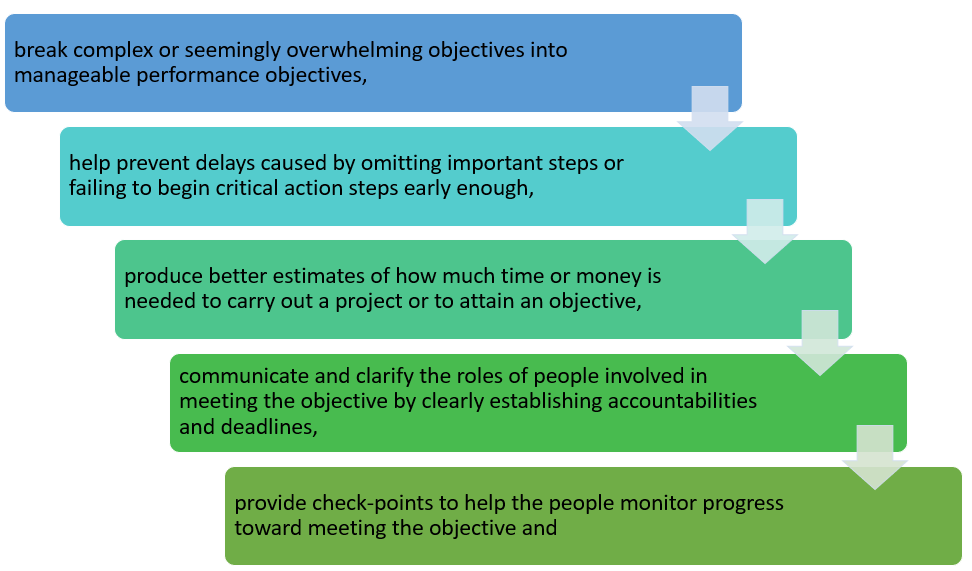Strong teams create strong organisations; weak teams create weak organisations. More and more organisations depend on well-functioning teams to serve customers, innovate and improve productivity. However, creating and maintaining effective teams can be a challenge. Effective teams can provide dramatic improvements over traditional work structures, but they often fall short.
Now the question arises: How can leaders ensure healthy teams?

Step 1 - Create a Shared Mission
Successful teams know their purpose – what the reason is for their existence. Teams that fail often attribute their failure to an unclear focus. For the company to be successful everybody should be moving in the same direction.
A good team mission statement should:

The most important aspect of creating your team mission is that the leader cannot do it on his own. To gain maximum buy-in and engagement (employee engagement means that employees’ hearts hands and minds should be involved in the work, not only their hands) from employees, team members themselves should develop the mission. The role of the leader is merely that of facilitator and gatekeeper.
A mission statement should include:
- A statement of the overall purpose of the department,
- Description of the key customers,
- Key results to be attained, and
- Other factors such as alliance partners, important deliverables, deadlines and critical technologies could be added if they add value.
Step 2 - Set Goals and Measure Results
Without a set of measurable goals, teams can easily be distracted by issues not relevant to the success of the team, the project and the customers.
Not measuring performance is like playing a game without keeping a score. A set of clear performance measures allow the team to manage its progress and fulfil the purpose outlined in its mission statement.
Click here to view a video on guidelines on how to set clear goals for your team.
Step 3 - Setting Performance Standards
A standard is simply a statement of what will be an acceptable performance. Perfection obviously is not standard. Standards should be attainable by the average person and surpassed by superior performance.
Key questions the individual needs to ask himself concerning his job are: “What are the performance standards that need to be maintained/reached in my section?” or “How can I tell when I am performing my job to standard?”
The main requirement of the standard is that it should mean the same thing to the people who are using it. It is better to put emphasis on facts and data rather than opinions and subjective judgment. Not everything can be measured. In making some of the most important business decisions such as, “Will it sell?" or "Will he fit into his job?” or “Should we trust them?” judgment, as well as measurement, must be used. Any standard, which enables you to distinguish failure from success, is better than none at all.
Finally, it is important to apply a standard to the end result or output of the job – measure whether you have achieved what you have set out to achieve in your goal setting.
Click here to view a video that explains performance standards.
Step 4 - Putting It All in an Action Plan
Action plans provide a method for identifying who needs to do what and when in what order to accomplish an objective. In other words, action plans outline and sequence the steps and the resources (people, finance, time, and equipment) needed to achieve the performance objective. The benefits of action plans include:

Action plans also help people to anticipate what might go wrong and to prevent potential problems from occurring again and are a valuable tool for setting up performance since they specify exactly what needs to be done and by when and help both manager and employee track performance progress.
Click on the link/s below to open the resources.
Step 5 - Define Team Member Roles and Responsibilities
Clearly defining team member roles and responsibilities up front is crucial. Begin by jointly deciding what should be expected of all team members. Once in agreement on areas of common responsibility, start determining individual roles.
- Review existing skills and expertise in your team.
- Compare these with skills needed by your goals, objectives and charter.
- Allocate roles and responsibilities clearly.
- Identify the development needs of team members in order to fulfil your team goals.
Step 6 - Create a Feedback Cycle
Each team member’s performance affects the work of the whole team. Giving feedback for improvement requires special skills. Here are three principles to use feedback as a performance improvement tool:
- Giving feedback is a way to improve the performance of the team, not to make oneself feel better.
- Avoiding critical feedback usually makes things worse.
- Arguing over others’ feelings or perceptions is seldom productive. It is more useful to listen, understand team members’ intent, and ask questions that clear up any confusion.
Step 7 - Development Operating Guidelines
To function effectively, a team needs to clearly set out its expectations about behaviour and interactions.
Operating guidelines are a set of shared agreements developed by the team which define how team members will interact. For example:
- ‘we will be prepared for meetings,
- ‘we will treat each other with respect and dignity or
- ‘we will follow through on our commitments’.
Such guidelines provide a conscious alternative to unspoken norms such as ‘we will defer to management to make decisions’ or ‘we will complain about other team members behind their backs instead of talking with them directly’. Used properly, operating guideline is a powerful tool for self-regulation and team well-being.
As team members give their commitment to helping improve team relations and subsequently team efficiency, the team leader should also give his/her commitment. Remember, if your aim is employee engagement, you are not only interested in employees’ hands, but also in their heads and hearts. Although it sounds logical, it is sometimes very hard to get commitment from employees on this level.